Nothing has my mouth watering like a thick, juicy steak cut grilled with lemon butter and a rich salad on the side.
As a steak lover, I must admit it can be a little daunting to choose the best and most flavorful animal cut with all the options available.
After weeks of researching and consulting a butcher friend, I've finally compiled a list of the best steak cuts for grilling.
At Carnivore Style, we believe that picking the right cut is key to the perfect steak experience.
In this article, I share the top 11 best steak cuts reviewed based on quality, grade, and flavor-holding abilities.
Let's get into it.
Quick Summary
- Ribeye, New York strip and porterhouse are some of the best steak cuts available.
- The best steak cut has an equal thickness and marbling distribution for a richer taste.
- Cooking steak cuts on high heat gives a crunchy browned exterior.
4 Things to Help You Choose The Best Steak Cut

Before firing up your grill, hop onto ButcherBox meat delivery service and order the best, all-natural, freshly cut beef strip steaks for your next cookout session.
Here are four tips and tricks to help you choose the perfect steak cuts for your next barbecue cookout:
1. Marbling
Marbling is the tiny white dots you see on a new cut of steak. They are little patches of fat that melt on the hot skillet, making the steak tender and juicier.
An excellent steak cut has an equal distribution of marbling throughout the meat, giving it a deliciously rich taste.
A steak with strong marbling has more monounsaturated fats than ordinary beef and is high in omega 6.
It also includes oleic acid and low cholesterol values, which is healthy for the heart.
2. Thickness
As far as the thickness of the steak is concerned, you can buy a thick or thin cut depending on what floats your grilling boat.
Thin, lean steak cuts are way easier to cook, and they can take 3-5 minutes to get that medium succulent bite.
If you cook it for any longer, you'll likely get a tough, dry piece of meat. On the other hand, if you prefer thick cuts, they may take a bit longer to cook but give the perfect crisp on the outside with a juicy pink inside.
3. Grade
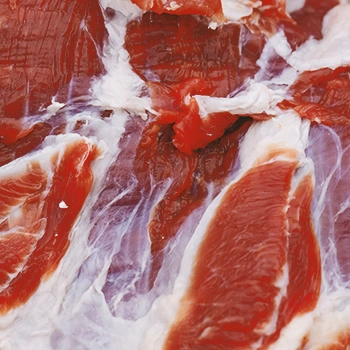
There are three grades of steak cuts: prime, choice, and select meats. Some of the best steakhouses and restaurants in the US sell prime beef, the 1st grade of meat.
According to the USDA beef scale, prime beef is the most expensive grade of steak [1].
Prime-grade beef is mainly cut from young animals as the best quality meat. This grade is one of the most tender and tasty cuts of beef you can order in any restaurant.
Choice meat, which has less marbling than prime beef, comes in second, while select meat, the next third alternative, is less expensive but has less taste than the higher grades.
For instance, if you’re looking for a luxurious dining experience, you might opt for beef that's graded Prime, while if you’re seeking a balance of quality and affordability, Choice beef could be a perfect choice.
And if you’re aiming for a leaner, less marbled cut, Select beef might be the way to go.
Read More: Prime vs Choice Beef
4. Price
Pricing and budget are essential when it comes to buying steak cuts. You don't have to break the bank to get a nice steak for dinner.
Always purchase quality steak cuts that are within your budget limit.
It's worth noting that highly-priced steak cuts have more marbling and flavor while less costly ones have less marbling and are thin.
If you have extra money to burn, you could try the most expensive prime steak, the Japanese Kobe steak.
Top 11 Steak Cuts For Grilling
Here are the best top eleven steak cuts that tick off all boxes:
1. Ribeye
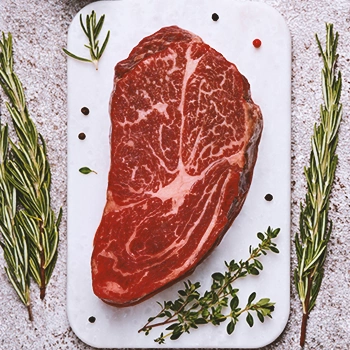
Ribeye tops my list because it's the best steak cut on the market. This beef cut is obtained from the cow's rib and is undoubtedly one of my most valued and sought-after steak cuts that has a reserved spot in my freezer.
These premium cuts are almost coated in a good layer of marbling, and the taste will make your mouth sing. All that extra fat gives the ribeye cut a fantastic amount of meaty flavor, making it one of the finest cuts on the cow.
It also doesn't hurt that this steak cut is generally exceedingly juicer, softer, and as tender as you could want your steak to be.
If steak size and thickness matter to you the most, then ribeye is what you're looking for. These cuts are perfectly sized, 1.5-2 inches thick.
Ribeyes are thick enough to give you that gorgeous steak crust without overcooking the meat.
While there are many seasonings to add to your Ribeyes, sometimes simple is best.
You can choose to serve ribeyes with mashed potatoes or your favorite go-to salads.
"All you need to cook a perfect ribeye steak is Kosher salt! It's thicker, flavourful, and holds longer to any steak cuts when you're grilling."
- Arturo McLeod, Executive chef
2. New York Strip
The New York strip steak is sliced from the short loin of cattle, occasionally with the bone intact but most commonly as a boneless cut. This steak cut has a significantly stronger beef taste than the ribeye.
A New York strip has less subcutaneous fat and a chewy crust texture than a ribeye and a beefier and far less fatty taste. Because it has less marbling, it is less expensive, so you will not be paying through the nose when you order.
Try a dry-aged New York strip for a bold New York steak taste. Dry-aging beef accentuates the flavor and disintegrates the soft tissue in the muscle, resulting in natural softness and incredible flavor that's out of this world.
If you want to cook this steak cut like a champ, sear it on a hot cast-iron pan before finishing it in the oven.
3. Porterhouse

Porterhouse steak is referred to as the king of the steakhouse, and it is similar to the t-bone cut.
It's a cut from the short rear end of the cow's loin, where the tenderloin and strip portions are more significant, and as a result, the Porterhouse has more tenderloin steak than T-bone.
A bone connects the New York and tenderloin cuts to give the Porterhouse cut.
Porterhouse cuts are massive, juicy, and bursting with flavorful tastes. These pieces of beef are best cooked on a cast-iron skillet for maximum heat control and flavor depth.
If you don't achieve the right sear on this giant of a steak, you'll wind up with a raw mouthful of meat.
4. T-bone Steak
This famous steak is actually two steaks in one. The bone is T-shaped and separates the bold, meaty New York stripe on one end and the gentle, soft filet on another.
Searing on high heat on the pan and finishing it in the oven serves you a browned exterior with juicy flesh in the center.
When T-bone steaks are cut from the short loin of a cow, where there is a greater tenderloin region, they’re termed a porterhouse steak.
It would be best if you looked for marbled T-bone steaks for that extra juicy, beefy flavor.
5. Flank Steak
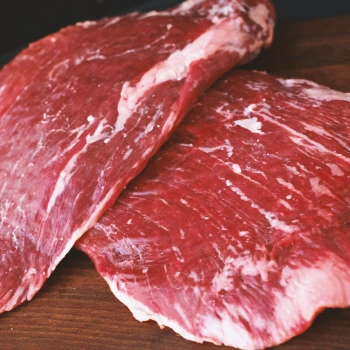
Flank steak is an underappreciated cut that few people seem to know, let alone prepare and consume daily.
However, with its rich meaty flavor and distinct striations which soak up spices and condiments, it has to be on everyone's favorites list of grilled cuts.
This relatively lean piece of beef is tasty and less costly than other meat cuts, though it requires careful cooking to avoid being dry and tough.
It is commonly confused with skirt steak, although skirt steak originates from the animal's diaphragm beneath the rib region.
Among the nicest things about flank steak is how versatile they are. It's by far the most versatile cut of steak available, and it is incredibly delicious no matter how you prepare it.
Like flat iron steak, you can grill, stir fry, cook slowly on the stove, or throw this bad boy in the oven.
6. Skirt Steak
The skirt steak is a long, thin steak sliced from the cow's abdomen. Since it is derived from a highly muscular part, the meat produced is leaner and tougher than more standard hanger steak cuts.
Your butcher may provide two kinds of skirt chuck steak: outer and inner skirts. It would be best to choose the outer skirt since it is softer and has a richer meaty taste.
The inside and outer skirts are flattened muscles with thick grain that spans the amount of muscle. Once cut, these butcher’s steak slabs of flesh can be 21 to 25 inches long and four to five inches wide.
Even though skirt steak is extremely quick and simple to prepare, you should be careful not to end up with a tough, dry cut on your plate.
7. Prime Rib
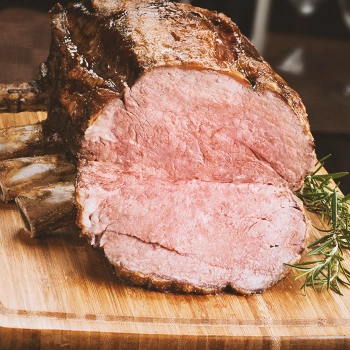
A prime rib steak is generated from the standing rib roast. It stands out from other steak cuts because it is sliced first before roasting.
As a versatile cut, it can be prepared in various ways; you can sear it on a hot skillet or grill it and then gently roast it over low heat to cook medium rare and make it softer. But if you want a mouth-watering bite, go the oven roasting way.
My favorite thing about prime ribs is that pretty much all beef ingredients complement this meat's delicate and flavorful character.
8. Sirloin Steak
The sirloin steak cut is obtained from the sirloin primal part of a cow. The Sirloin primal is made up of two parts:
- Top Sirloin: Cuts from this section are the best when it comes to grilling
- Bottom Sirloin: Cuts from this section make the best ground meat and are also suitable for roasting.
Sirloin is a tougher and less tender meat cut than other strip steaks.
Top sirloin steak is typically good for high-heat searing, but be cautious not to overcook it since the meat can become tough and dry at temperatures above 160F, which is the recommended temperature for well-done delicious steak [2].
If you're looking for a way to add extra bold taste and moisture to your sirloin cuts, consider marinating it for a couple of hours or, better yet, leave it overnight.
9. Tenderloin Steak
This steak cut found in a cow's loin is particularly long, narrow, and extremely tender.
As its name suggests, this strip steak is derived from a least exercised muscle with less connective tissue, the "tender loin" [3].
Tenderloin strip steak is a winner when grilled and is best barbecued hot and quick. When cooking, the outside of this steak should be browned, while the internal temperature shouldn't be any higher than medium.
Marinades are not a must-do for this cut as long as the meat is not overcooked. You can use spice rub on the cut if you want a more intense beef flavor.
Also Read: Crusted Beef Tenderloin
10. Filet Mignon
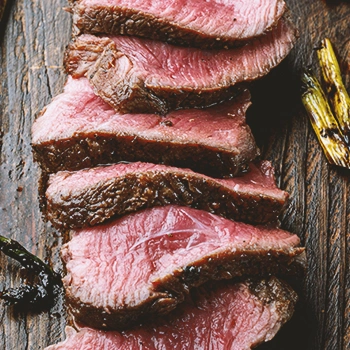
Filet mignon is cut from the smallest end of the tenderloin. This steak cut is one of the tenderest meats you can find because it's derived from a muscle that does almost nothing.
The tenderloin is divided into three sections. The head connects to the sirloin muscle, the body that sits in the center of the tenderloin, and the triangular tail at the end; this is where the filet mignon is cut from.
Aside from being tender, steak filet mignon is a rare cut of beef. I could say it's exclusive because steers and heifers only produce 500g of filet mignon on average [4]. It's also quite expensive, but we pay more for the things we value, and filet mignon is one of those things.
Thickness, marbling, and color are some desirable qualities in a filet cut. Of course, the thickness is entirely up to you; if you like your filets well-done, go for a thinner cut, but the Carnivore Style's team recommends filets that are at least two to three inches thick if you want medium-rare filet bites.
11. Merlot Steak
Merlot is a midline chunk of the heel meat muscle. That's the section just above the shank and below the bottom round known as gastrocnemius.
It works well with a touch of tenderizing first, but it doesn't always need it because it's a tender cut. However, if the filet is your go-to steak cut, you might find the merlot a little chewier.
It's easy to make; simply sear it on both sides. Because the merlot is cut from a working muscle, it benefits better from a little high heat when cooking.
Like any other perfect steak, allow it to rest for five to seven minutes before slicing it across the grain.
"Resting allows the muscle fibers on the meat to relax and reabsorb any moisture, and the steak will be tenderer."
- Thomas Godfrey, Chef and Food Operations Manager
FAQs
What Cut Of Steak Is The Most Tender?
The filet mignon cut of steak is the most tender. It's the leanest cut from the center of the beef tenderloin.
Is Sirloin Steak Or Ribeye Steak Better?
Sirloin is better than ribeye steak as it’s a thinner cut that cooks faster and gives you a smoky flavor. On the other hand, Ribeyes take longer to cook, and with their extra fat layer, they may not do well on the grill.
What Are The Three Best Cuts Of Steaks?
The best three cuts of steaks are ribeye, New York strip, and porterhouse steak cuts.
Is T-bone Steak Better Than Ribeye Steak?
T-bone is better than ribeye steak on certain levels. The T-bone and ribeye have juicy beef flavor, but the t-bone has a less fat content. T-bone is your best shot if you want something with less fat.
What Is The Most Expensive Steak Cut?
The most expensive steak cut is the Japanese Kobe and Wagyu with fantastic marbling and excellent grading quality.
Is Choice Meat Better Than Select?
Choice meat is generally considered better than Select, as it is a grade higher and often carries a brand name. Choice is also the most popular grade overall, while Select is the lowest grade available to the consumer.
What Is the Difference Between Choice and Standard Meat?
The difference between Choice and Standard meat is that Choice beef is high quality, but it has less marbling than Prime beef. Lower grades, such as Standard, have no grading stamp and have little to no marking.
What is Choice Meat?
Choice meat is a grade of beef known for its marbling, flavor, and tenderness, falling between Prime and Select in the USDA beef graded system. In essence, Choice beef offers a balance between the luxurious tenderness of Prime beef and the affordability of Select beef.
References:
- https://www.usda.gov/media/blog/2013/01/28/
- https://www.certifiedangusbeef.com/kitchen/doneness.php
- https://www.beefitswhatsfordinner.com/cuts/cut/2773/
- https://www.mashed.com/199319/


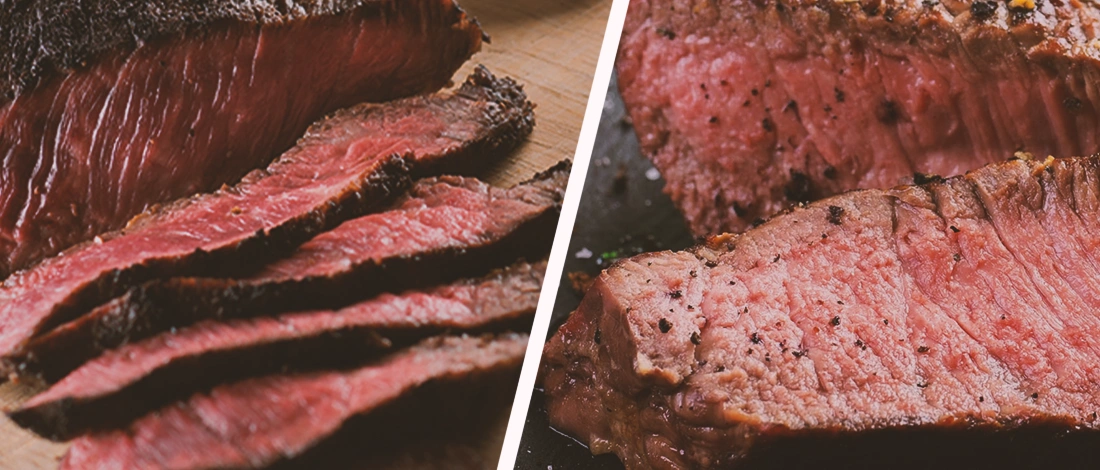

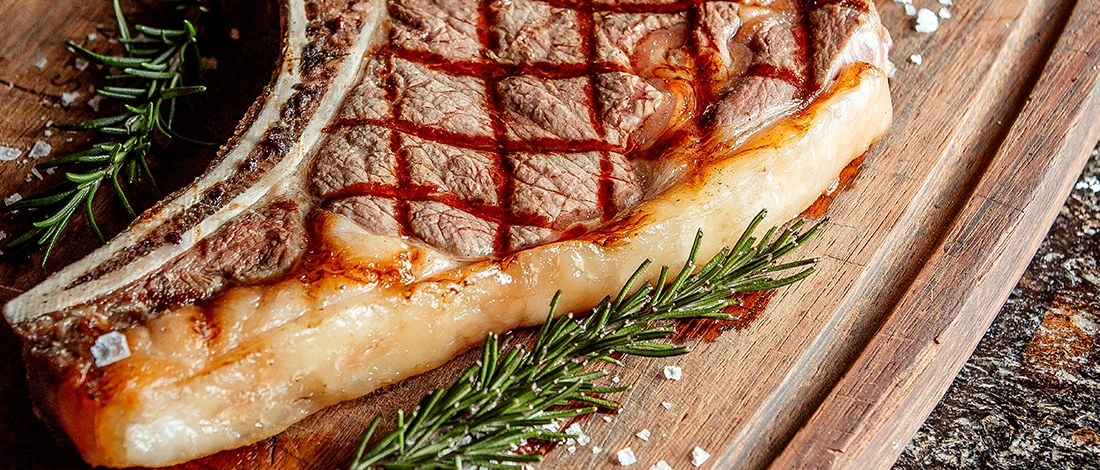
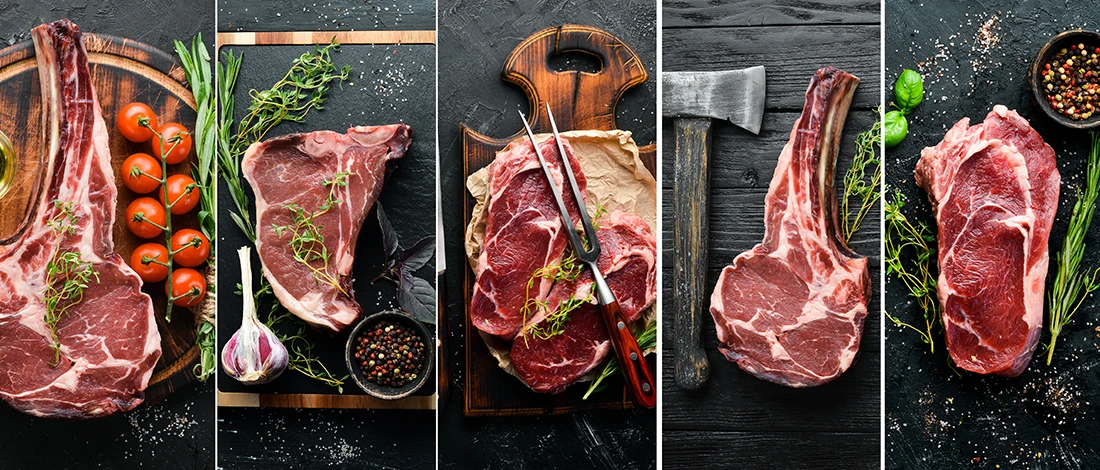
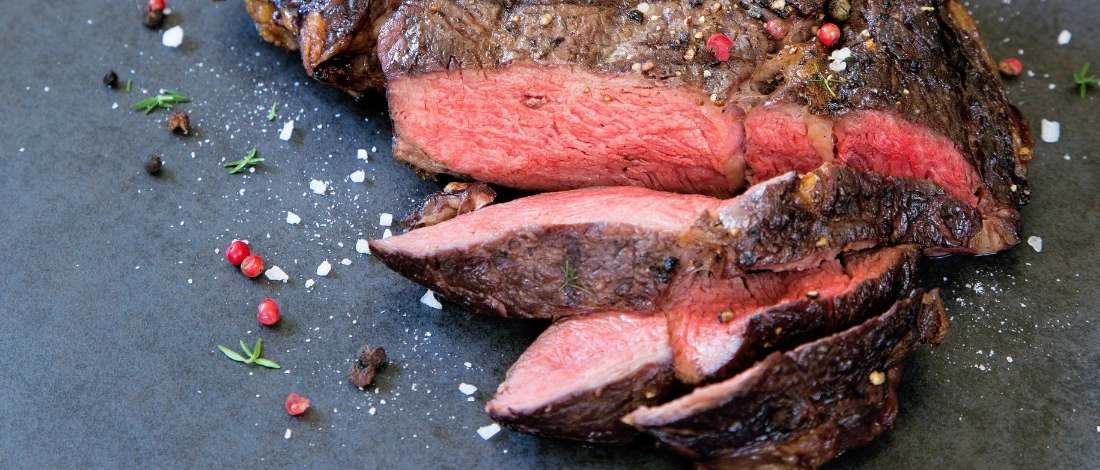


I always find myself overwhelmed by the options at the butcher. I had no idea there were so many flavorful cuts! I’m definitely going to try the ribeye next. Thanks for breaking it down so clearly.